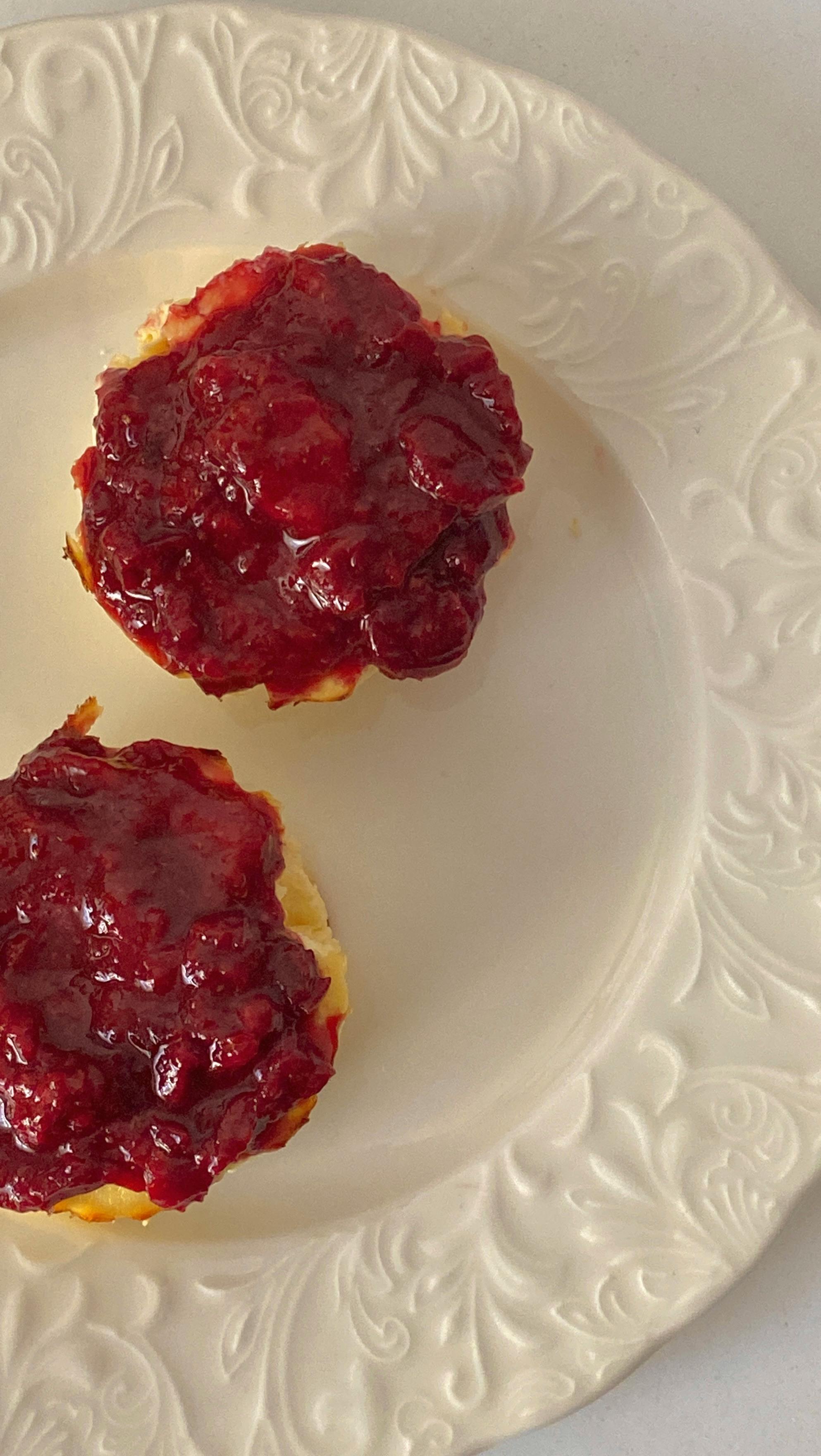How do you use strawberry jam and raspberry jam on scones?
Sometimes, the smallest rituals tell the biggest stories. The way we take our tea. How we prepare a scone. And in the case of a cream tea, the kind you’d enjoy in a sun-drenched garden or a centuries-old tearoom, the question is timeless: Do you put the jam or the cream on first?
It turns out, your answer might say more about where you come from than you think.
Devon or Cornwall: The Quiet Power of Tradition
In Devon, the approach is unapologetically rich: a halved scone, a generous smear of clotted cream first, then a dollop of jam. Like buttering toast, but elevated. It’s a nod to the region’s dairy heritage, rolling pastures, heavy cream, and centuries of farmhouse abundance.
Just over the border in Cornwall, things flip. Jam goes on first, followed by a spoonful of cream placed delicately on top. Here, the focus is on fruit. Cornwall’s history as a region of growers and jam makers plays out beautifully in each bite.
Neither version is better. But both are deeply personal and deeply cultural.
Today, many are turning to reduced-sugar or no-added-sugar jams, some made with frozen strawberries, chia seeds, or natural sweeteners, as a way to bring a lighter touch to old traditions. Brands like Natvia, known for low sugar friendly fruit spreads reflect a shift toward simple, more mindful ingredients, without straying too far from the comfort of a classic cream tea.
A Quiet History in Every Bite
The story traces back to the 11th century, when monks at Tavistock Abbey in Devon served bread with clotted cream and preserves. It was a meal designed to nourish, yes, but also to comfort. Over time, this became known as “cream tea,” and by the 19th century, it had evolved into a ritual beloved by everyone from farmers to the upper class.
Each region developed its own version. Each one stuck. The result? A low-stakes culinary rivalry with real roots.
The Royal Treatment
Queen Elizabeth II reportedly favored the Cornish method of jam first, then cream, according to former royal chef Darren McGrady, who served in the royal kitchens from 1982 to 1993. He noted that at royal garden parties, the Queen always opted for homemade jam beneath clotted cream.
However, another royal pastry chef, Chris Tombling, has said that scones at Buckingham Palace were served the Devon way, with cream first. This contradiction may reflect evolving preferences or simply that even in the palace, the debate is alive and well.
Modern Trends: A Youthful Shift?
A YouGov poll found that 62% of Britons prefer the jam-first (Cornish) method, while only 28% back the Devon approach. Interestingly, younger generations (under 30) are more likely to favor cream first, suggesting a generational shift in scone etiquette.
Raspberry jam and strawberry jam a top picks for scone lovers around the world. Spreading a low-sugar raspberry jam or strawberry jam for kids and adults alike, it's a quiet reminder of how tradition can evolve, gently, without losing its essence.
What It Says About You
Regardless of whether you go cream-first or jam-first, the truth is: you’re participating in something much bigger than a tea break. You're connecting with a landscape, a legacy, and the quiet pleasure of eating something made with care.
The cream tea is humble, yes, but it’s also ceremonial in its own way. It asks you to slow down. To choose. To savor. That’s a ritual worth preserving.
Sources
-
East End Taste – The Great Scone Debate
-
The Spruce Eats – Cornish vs Devon Cream Tea
-
Visit South Devon – The History of the Cream Tea
-
Visit Dartmoor – History of the Devon Cream Tea
-
Cornish Cream Teas – History of Cornish Cream Teas
-
Cookist – The History Behind Cream Tea
-
Independent – Queen's Preference: Jam First
-
Hello! Magazine – Royal Chef Reveals Scone Order
-
Yahoo Style UK – How We Should Eat Scones, According to the Royals
-
The Telegraph – YouGov Poll: Cream vs Jam Debate
-
Hampers.com – The Cream Tea Debate





